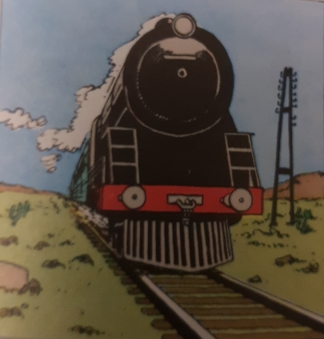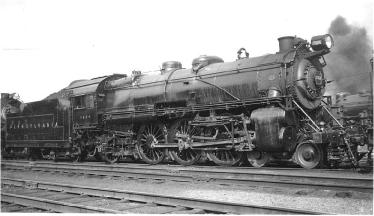 Tintin books were published from 1930 till 1976. Over these 46 years, transportation underwent a revolution. This is very evident from the means of transport used by Tintin over the various books. The only means of travelling long distances from 1930s till the early sixties were ships. Tintin travelled across the world on various ships and quite a few of his adventures are marine. Then as the time progressed, air travel became the norm as can be seen in the later books. Similarly, in the early years, the only means of travelling long distances fast on land was the railways. Tintin is seen taking trains in many of his early books. In the third book, Tintin in America, his adventures again led to him getting aboard trains.
Tintin books were published from 1930 till 1976. Over these 46 years, transportation underwent a revolution. This is very evident from the means of transport used by Tintin over the various books. The only means of travelling long distances from 1930s till the early sixties were ships. Tintin travelled across the world on various ships and quite a few of his adventures are marine. Then as the time progressed, air travel became the norm as can be seen in the later books. Similarly, in the early years, the only means of travelling long distances fast on land was the railways. Tintin is seen taking trains in many of his early books. In the third book, Tintin in America, his adventures again led to him getting aboard trains.
 The steam locomotive depicted pulling two trains in the book are the most popular locomotive class in the USA – in fact, the whole world – the 4-6-2 Pacific Class. These locomotives were popular with American railways for hauling long distance express passenger trains. They are shown doing the same in “Tintin in America”. The locomotives depicted in the book show the typical shape of these locomotives, a short exhaust, ladders on the sides to reach the various components installed in the boiler body an high mounted head lamps.
The steam locomotive depicted pulling two trains in the book are the most popular locomotive class in the USA – in fact, the whole world – the 4-6-2 Pacific Class. These locomotives were popular with American railways for hauling long distance express passenger trains. They are shown doing the same in “Tintin in America”. The locomotives depicted in the book show the typical shape of these locomotives, a short exhaust, ladders on the sides to reach the various components installed in the boiler body an high mounted head lamps.
 The 4-6-2 Pacific class were manufactured from 1901 to 1930 in the USA. They were the most numerous passenger train locomotives till the early 1950s when diesel locomotives started replacing them in USA. 7,500 4-6-2 Pacifics were manufactured for railroads in USA and Canada. As they were built for different railways operating in very varied topographies and climatic conditions, a very large version of these locomotives were manufactured by a number of manufacturers. All major locomotive manufacturers of the time like, ALCO, Baldwin, Lima, B&O etc manufactured these locomotives.
The 4-6-2 Pacific class were manufactured from 1901 to 1930 in the USA. They were the most numerous passenger train locomotives till the early 1950s when diesel locomotives started replacing them in USA. 7,500 4-6-2 Pacifics were manufactured for railroads in USA and Canada. As they were built for different railways operating in very varied topographies and climatic conditions, a very large version of these locomotives were manufactured by a number of manufacturers. All major locomotive manufacturers of the time like, ALCO, Baldwin, Lima, B&O etc manufactured these locomotives.

Though these locomotives were most widely used to haul express trains, they were also build for freight as well a mixed duties. As a result of the various modifications and different manufacturers, these locomotives had driver wheel diameters varying from 67″ (1,701.8 mm) to 80″ (2,032 mm). Their boilers generated steam at pressures varying from 170 psi (11.72 bar) to 250 psi (17.24 bar). The Pacific locomotives used both four cylinder compound engines as well as two cylinder engines. The compound engines were used because they were economical with both fuel and water. They were more popular in Western USA where the quality of water available was not very good. Later many of these locomotives were modified in the 1920s to include boilers with super heaters which were more economical as well as easier to maintain as compared to the four cylinder compounds.
The tractive effort of these locomotives varied from 25,000 lbs (111.21 KN) to 50,000 lbs (222.41 KN). The locomotives developed from the first generation P1s manufactured in the first decade of the twentieth century to the P8s manufactured in the 1930s. Nealy all these locomotives were build to run on the standard gauge; 4’8-1/2″ (1,435 mm); except some which were exported to countries like India which used the broad gauge; 5′ 6″ (1,676 mm).
Most of these locomotives were retired by the mid 1950s in the USA, though many continued serving in railways across the world well into the 1970s and even early eighties.
